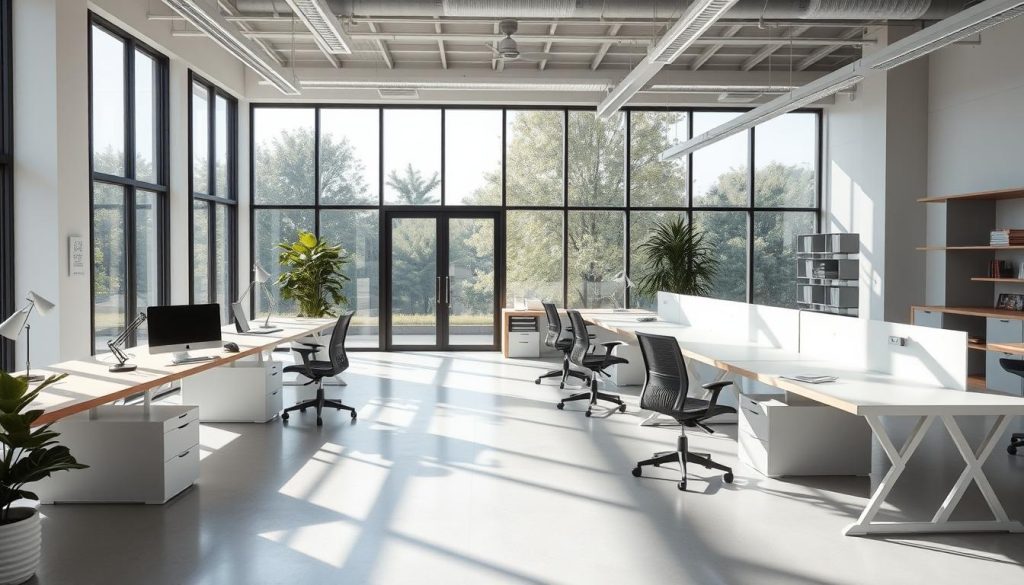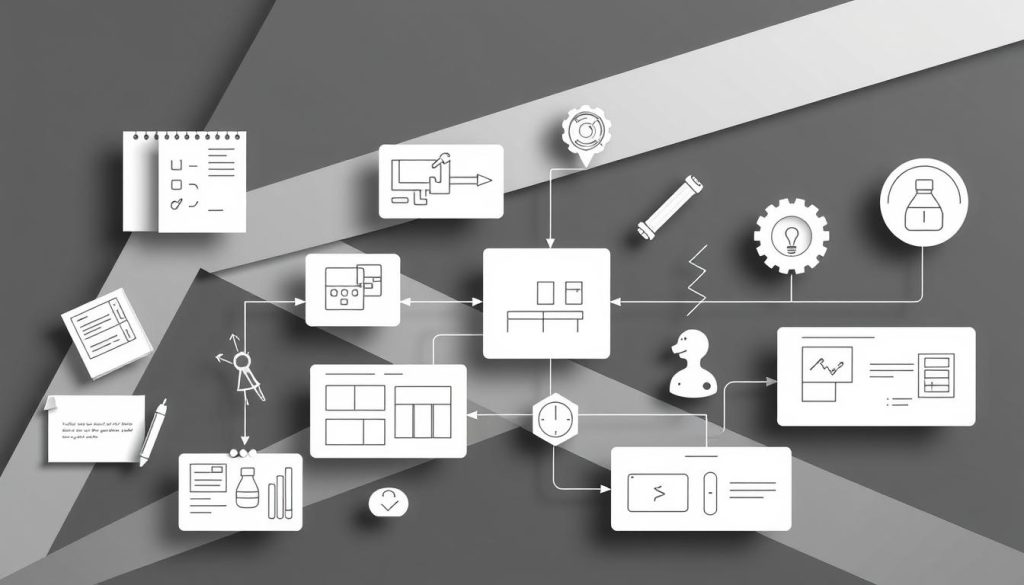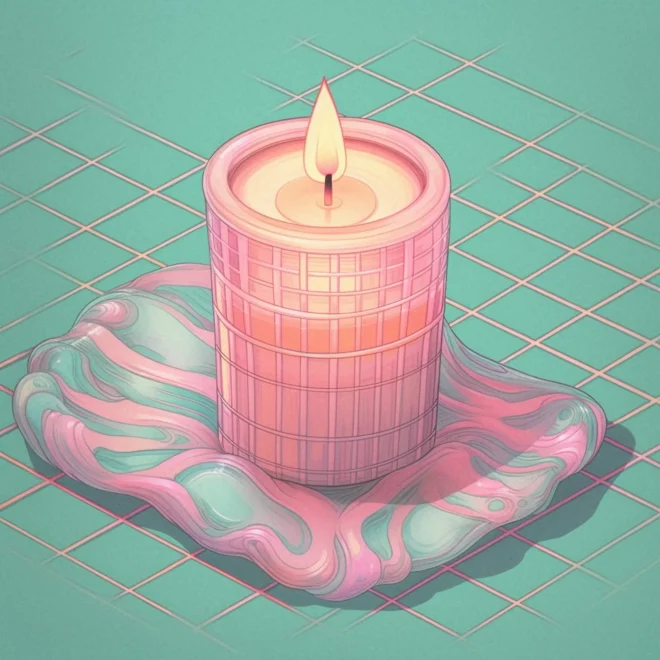As a designer, I grasp the significance of crafting visual experiences that encapsulate a brand’s essence. My approach focuses on creating designs that connect with the audience and make a memorable impact. With a solid background in graphic design, I’ve honed a method that merges creativity with technical prowess, ensuring top-notch designs.
In the realm of design, graphic design is vital for shaping a brand’s visual identity. My aim is to design visuals that not only impress but also convey the brand’s message clearly. This applies to logos, websites, or marketing materials, aiming for both beauty and functionality.
In my design journey, understanding the client’s needs and objectives is key to crafting bespoke solutions. By leveraging my design knowledge and technical abilities, I create designs that are both impactful and visually stunning.
Key Takeaways
- My design process is centered around creating stunning visual experiences
- I have a strong foundation in graphic design
- I blend creativity with technical expertise to deliver high-quality designs
- Understanding the client’s needs and goals is critical to my design process
- I strive to create designs that are both aesthetically pleasing and functional
- My goal is to create designs that resonate with the target audience and leave a lasting impression
My Design Philosophy and Approach
As a designer, I hold that effective design merges aesthetics with functionality. My philosophy emphasizes the need for creativity and strategy to converge. This convergence is key to crafting designs that not only captivate the eye but also achieve tangible results. Whether tackling web design or interior projects, my aim is to forge designs that are both stunning and practical.
For me, successful design is a symphony of form and function. A design should be both visually stunning and serve its purpose, ensuring a positive user experience. To hit this mark, I meticulously consider the client’s objectives, their target audience, and the latest design trends and technologies.
The Intersection of Creativity and Strategy
In my design methodology, I blend creative insight with strategic acumen. This fusion enables me to craft designs that are both groundbreaking and effective. Such an approach ensures that each design is meticulously tailored to meet the client’s specific needs, whether for web or interior projects.
How I Define Successful Design
For me, successful design transcends mere aesthetics, embracing functionality and usability. I prioritize factors like usability, accessibility, and sustainability in my design process. This holistic approach guarantees designs that are not only effective but also visually captivating.
My Core Design Principles
My design ethos is rooted in simplicity, clarity, and consistency. These principles are fundamental to creating designs that are both visually striking and functional. By adhering to these principles, I ensure that my designs are of superior quality and align with the client’s objectives.
Understanding Client Needs: My Discovery Phase
When starting a new project, whether it’s product design or architectural design, I focus on understanding the client’s needs and goals. I conduct research, gather feedback, and analyze data to grasp the project’s requirements. Listening to the client’s vision and objectives is key, ensuring my designs meet and exceed their expectations.
To gather information, I use surveys, interviews, and focus groups. These methods help me identify the client’s target audience, preferences, and pain points. This insight informs my design decisions, allowing me to create solutions that are tailored to their specific needs. As a result, the outcome is more effective and successful.
During this phase, I consider several key aspects:
- Client objectives and goals
- Target audience and demographics
- Market trends and competitor analysis
- Project timelines and budget constraints
By examining these factors, I gain a deep understanding of the client’s needs. This understanding enables me to develop a design strategy that aligns with their vision. My aim is to deliver a design that not only meets but also surpasses the client’s expectations, regardless of the project type.
Research and Inspiration: Where I Find Creative Fuel
As a designer, I recognize the critical role of research and inspiration in my work. I actively seek out creative fuel, whether through mood boards, references, or market trend analysis. This approach keeps me at the forefront of design innovation and effectiveness.
Understanding the latest design trends and technologies is vital when working with a design agency or firm. By analyzing competitors, I can pinpoint market gaps and craft designs that differentiate themselves.
Building Mood Boards and References
I begin by assembling mood boards and references to encapsulate the brand’s essence. This involves collecting images, colors, and textures that reflect the desired mood. For instance, designing a website for a fashion brand might involve a mood board with stylish clothing, trendy accessories, and chic backgrounds.
Analyzing Market Trends
Next, I dive into market trend analysis to stay current. This involves studying the latest design trends, technologies, and consumer behaviors. Understanding what’s popular and what’s emerging allows me to create designs that are both timely and enduring.
Competitor Design Analysis
Lastly, I conduct competitor design analysis to uncover market gaps. This involves examining my competitors’ designs, identifying their strengths and weaknesses, and finding ways to innovate. This strategy enables me to create designs that outshine the competition and help my clients reach their objectives.
Through this process, I ensure my designs remain inspired, innovative, and impactful. Whether collaborating with a design agency or firm, my dedication to research and inspiration guarantees designs that deliver results.
The Art of Design Conceptualization
In the realm of design, creativity and strategy are fundamental. It’s where these elements merge, and I bring my visions to life. This phase is about exploring various styles, colors, and typography through different design concepts.
I enjoy the freedom to innovate and challenge design norms. My aim is to craft designs that are not only visually captivating but also effective. Key considerations include understanding the client’s goals, researching the target audience, and developing a compelling design concept.
- Understanding the client’s goals and objectives
- Researching the target audience and market trends
- Developing a unique and compelling design concept

Design is not just about creating something visually appealing, but also about creating something that communicates a message and achieves a goal.
In my design studio, I focus on creating designs that are both aesthetically pleasing and effective. I believe this dual approach is critical for success in design.
| Design Element | Importance |
|---|---|
| Color | High |
| Typography | Medium |
| Imagery | High |
My Professional Design Tools and Technologies
As a professional designer, I employ a variety of design tools and technologies to realize my designs. My arsenal includes industry-standard software like Adobe Creative Cloud. This suite equips me with the necessary tools for both graphic and web design. I leverage these tools to craft visually captivating designs that fulfill my clients’ expectations.
I adapt my approach based on the project’s demands, oscillating between digital and traditional methods. For web design, digital tools are often preferred. In contrast, traditional methods are more fitting for print-based graphic design projects. Utilizing project management systems, I enhance my workflow, facilitate collaboration with clients, and ensure timely project delivery.
Software Stack and Platforms
My software stack encompasses:
- Adobe Photoshop for graphic design and image editing
- Adobe Illustrator for vector graphics and illustrations
- Adobe XD for user experience and web design
Digital vs. Traditional Methods
Digital and traditional methods each possess unique advantages and disadvantages. Digital tools offer flexibility and rapid execution, whereas traditional methods provide a distinctive, tactile experience. By integrating both, I aim to produce designs that are both impactful and aesthetically pleasing.
Project Management Systems
I rely on project management systems like Asana and Trello to oversee my workflow and engage with clients. These platforms enable me to monitor progress, establish deadlines, and maintain open communication with clients efficiently.
| Tool | Purpose |
|---|---|
| Adobe Creative Cloud | Graphic design and web design |
| Asana | Project management and workflow tracking |
| Trello | Collaboration and communication with clients |
Iterative Design Development: My Creative Process
As I dive into the iterative design development process, my goal is to refine my designs to meet client expectations and functional needs. For interior design projects, I work closely with clients to create spaces that are both beautiful and functional. This involves creating prototypes and making revisions based on feedback and testing.
In product design, I also iterate on designs to ensure they meet the desired functionality and user experience. This process includes continuous testing and refinement. I aim to create a high-quality product that meets the client’s needs.
- Continuous feedback and testing to ensure that the design meets the client’s expectations
- Refining the design through a series of prototypes and revisions
- Collaborating with clients to ensure that the design is functional and aesthetically pleasing
Design is a continuous process, and it’s essential to be open to feedback and willing to make adjustments to ensure that the final product meets the client’s needs.
Through this iterative design development process, I ensure my designs are of high quality. They meet the needs of my clients, whether for interior design or product design projects.
Collaboration and Client Communication Strategy
As a designer, I grasp the critical role of effective collaboration and client communication in achieving architectural design success. My strategy involves close collaboration with clients to fulfill their needs and realize their vision. In a design agency, this teamwork is vital for ensuring all parties are on the same page and informed at every stage.
Effective communication is the backbone of a successful project. I employ various presentation methods to unveil my designs, soliciting feedback and input from clients. This feedback is then incorporated into the design, and I utilize revision management tools to perfect it, ensuring it aligns with the client’s expectations. Key strategies include:
- Regular meetings and updates to ensure clients are informed and aligned with the design process
- Open and transparent communication to address any concerns or questions clients may have
- Collaborative design sessions to ensure clients are involved in the design decision-making process
Through this collaborative method, I am able to deliver architectural design projects that surpass client expectations. Whether working within a design agency or independently, my aim is to offer outstanding client service and provide top-notch design solutions that cater to my clients’ needs.
In my experience, a well-thought-out collaboration and client communication strategy is indispensable for architectural design project success. By engaging closely with clients and adopting a collaborative mindset, designers can create projects that are not only visually appealing but also functional and fulfill the client’s requirements.
Quality Assurance: How I Ensure Design Excellence
As a design firm, I grasp the critical role of delivering top-notch designs that surpass client expectations. To meet this goal, I’ve set up a thorough quality assurance process. This ensures my designs are not just high-quality but also meet the client’s precise needs. It involves various testing and validation steps to confirm the design’s functionality and user-friendliness.
In my design studio, adhering to design standards is a top priority. This commitment ensures my designs are consistent, dependable, and align with industry standards. Such dedication guarantees that my designs are of the highest caliber, ensuring a superior user experience. Key areas I concentrate on include:
- Design functionality and usability
- Visual appeal and consistency
- Accessibility and compatibility
By integrating these elements into my quality assurance process, I ensure my designs are not only visually captivating but also offer a seamless user experience. For a design firm or studio, prioritizing quality assurance is vital. It fosters trust with clients and solidifies a reputation for delivering outstanding designs.

My quality assurance process empowers me to confidently present designs that embody excellence. This makes me a reliable partner for clients in search of premium design solutions.
Project Delivery and Implementation Approach
As I near the end of a design project, my focus shifts to ensuring a smooth delivery and implementation. This is where the design comes to life, and it’s critical to get it right. I use various project management tools and techniques to streamline the delivery process. This ensures the design is implemented correctly and functions as intended.
Whether it’s a graphic design or web design project, I aim to deliver high-quality designs that exceed client expectations. My approach involves careful planning, attention to detail, and a commitment to meeting deadlines. I work closely with clients to understand their needs and preferences, ensuring the final product meets their requirements.
Some key aspects of my project delivery and implementation approach include:
- Utilizing project management tools to track progress and stay organized
- Conducting thorough testing and quality assurance to ensure the design functions as intended
- Providing clear and concise documentation to facilitate a smooth implementation process
- Offering ongoing support and maintenance to ensure the design continues to meet the client’s needs
By following this approach, I ensure my designs are not only visually stunning but also functional and effective. As a designer, my goal is to create designs that make a lasting impact. I believe a well-planned delivery and implementation process is essential to achieving this goal.
Conclusion: Bringing Vision to Life Through Design
My design process focuses on turning the client’s vision into reality, through both web and interior design. I start by understanding their needs, goals, and who they aim to reach. This allows me to create designs that not only capture attention but also achieve the desired outcomes. Whether it’s for digital or physical projects, my goal is to deliver designs that surpass client expectations.
My approach involves creating visual experiences that embody the brand or product’s essence. These experiences aim to leave a lasting impact on the audience. By combining creativity with strategic planning, I turn ideas into functional, tangible designs. This process brings the client’s vision to life, effectively.


